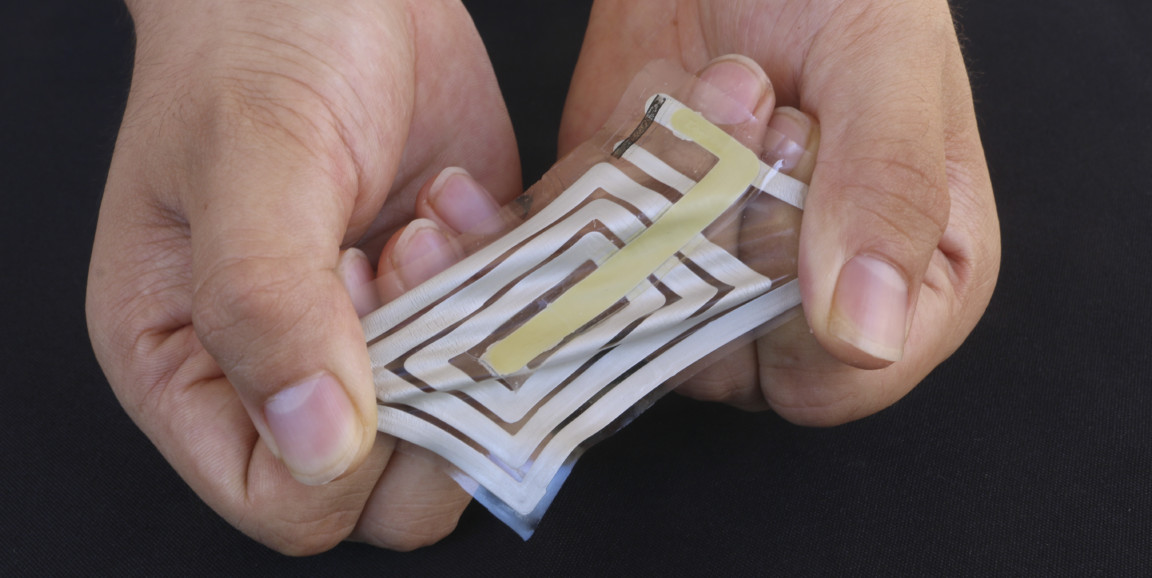Our skin is the largest organ in our body -- it serves an essential role in protecting the body and transmitting sensations to the brain. But tapping in to the biological signals shared through the skin -- such as flushed cheeks or a rapid pulse -- is tricky.
Now, after more than three years of work, a team of Stanford engineers think they may have cracked at least part of the puzzle with a new wearable system called BodyNet, a Stanford Engineering article explains. BodyNet features experimental stickers that pick up physiological signals emanating from the skin and wirelessly transmits these readings to a receiver attached onto clothing. The current design uses metallic ink to screen-print an antenna and a sensor onto a stretchable sticker designed to adhere to skin to track pulse and respiration, among other health indicators.
The project was led by chemical engineering Zhenan Bao, PhD, with postdoctoral scholars Simiao Niu, PhD, and Naoji Matsuhisa, PhD. The research is published in Nature Electronics.
In the article, Bao explains that BodyNet will first be used "in medical settings, such as monitoring patients with sleep disorders or heart conditions." However, her lab is already branching out to develop new stickers to detect sweat and other secretions to track variables like body temperature and stress.
The ultimate goal of BodyNet is to create a wide array of wearable wireless sensors that work together with "smart clothing" to more accurately track a multitude of heath variables and indicators than the smart phones or wearable devices of today, says Bao. "We think one day it will be possible to create a full-body skin-sensor array to collect physiological data without interfering with a person's normal behavior."
Photo courtesy of Bao lab






